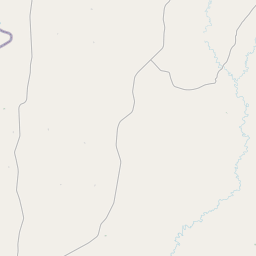Blum Male & Female College
Historical marker location:






Chartered February 26, 1880, by 36 incorporators; named for Leon Blum, Galveston merchant, largest holder in $20,000 capital stock -- $5 per share. First directors were: R. J. Brailsford, H. J. Casey, W. W. Downs, W. A. Droddy, T. W. Ford, M. D. Hines; First president was Joseph Syler.
Pupils ranged in age from 5 to 50 years; those under 12 met in downstairs of 2-story building; older pupils and adults met upstairs. Average enrollment per term was 100 resident and boarding pupils.
School "took up" at 8 a.m.; closed at 4:30 p.m. Students entered and left school by lining up -- boys on one side and girls on the other -- a division which continued inside the school room. Lessons were recited on a recitation bench; all tests were oral, often an occasion for community gathering. Subjects offered besides the 3 R's were: philosophy, Latin, grammar, algebra, history, geometry, rhetoric, and geography. Friday afternoons were devoted to spelling matches, recitations.
A well in school yard furnished water; most students brought lunch from home in a tin bucket which was covered with a lid ventilated by nail holes.
Soon was called Burkeville School, and after expiration of College Charter on February 20, 1905, the building served that purpose until torn down in 1912
As one of the most visible programs of the Texas Historical Commission (THC), historical markers commemorate diverse topics in Texas history, including: the history and architecture of houses, commercial and public buildings, religious congregations, and military sites; events that changed the course of local and state history; and individuals who have made lasting contributions to the state, community organizations, and businesses.
Texas was once an independent country: After winning its independence from Mexico in 1836, Texas became its own country, known as the Republic of Texas. It existed as an independent nation for nine years before being annexed by the United States in 1845.
In 1836, Newton County was officially established and named after John Newton, a hero of the American Revolutionary War. The county's geographical location, with its fertile land and proximity to major waterways, attracted many settlers, particularly from Southern states. The region's economy was largely based on agriculture, with cotton and timber being major industries.
During the late 19th and early 20th centuries, the discovery of oil and gas brought prosperity to Newton County. The oil boom transformed the county, attracting numerous oil companies, creating jobs, and boosting the local economy. However, the boom eventually declined, leading to a shift back to agriculture and timber as the primary sources of income.
Throughout its history, Newton County has been shaped by both natural and man-made disasters. The county has been prone to hurricanes and floods, with devastating effects on the community. In recent years, efforts have been made to implement flood control measures and improve disaster preparedness.
Today, Newton County remains a rural area with a population that values its rich history and natural beauty. It continues to be a place of agriculture, timber, and outdoor recreation, attracting visitors with its scenic landscapes and wildlife. The county's history and resilience serve as a reminder of the challenges faced by its residents and the strength of the community.
Newton County Timeline
This timeline provides a condensed summary of the historical journey of Newton County, Texas.
- 1846 - Newton County is established by the Texas state legislature.
- 1870s - The county experiences growth due to the expansion of the lumber industry.
- 1904 - A devastating fire destroys a significant portion of the town of Newton.
- 1907 - Bon Wier is established as a sawmill town.
- 1930s - The Great Depression brings economic hardship to the county.
- 1940 - The Toledo Bend Reservoir is constructed, resulting in the flooding of parts of Newton County.
- 1960s - The construction of the Toledo Bend Dam leads to increased tourism and recreational activities in the county.
- 1990s - Newton County experiences population growth due to its proximity to the Toledo Bend Reservoir.
- 2005 - Hurricane Rita causes significant damage to the county.